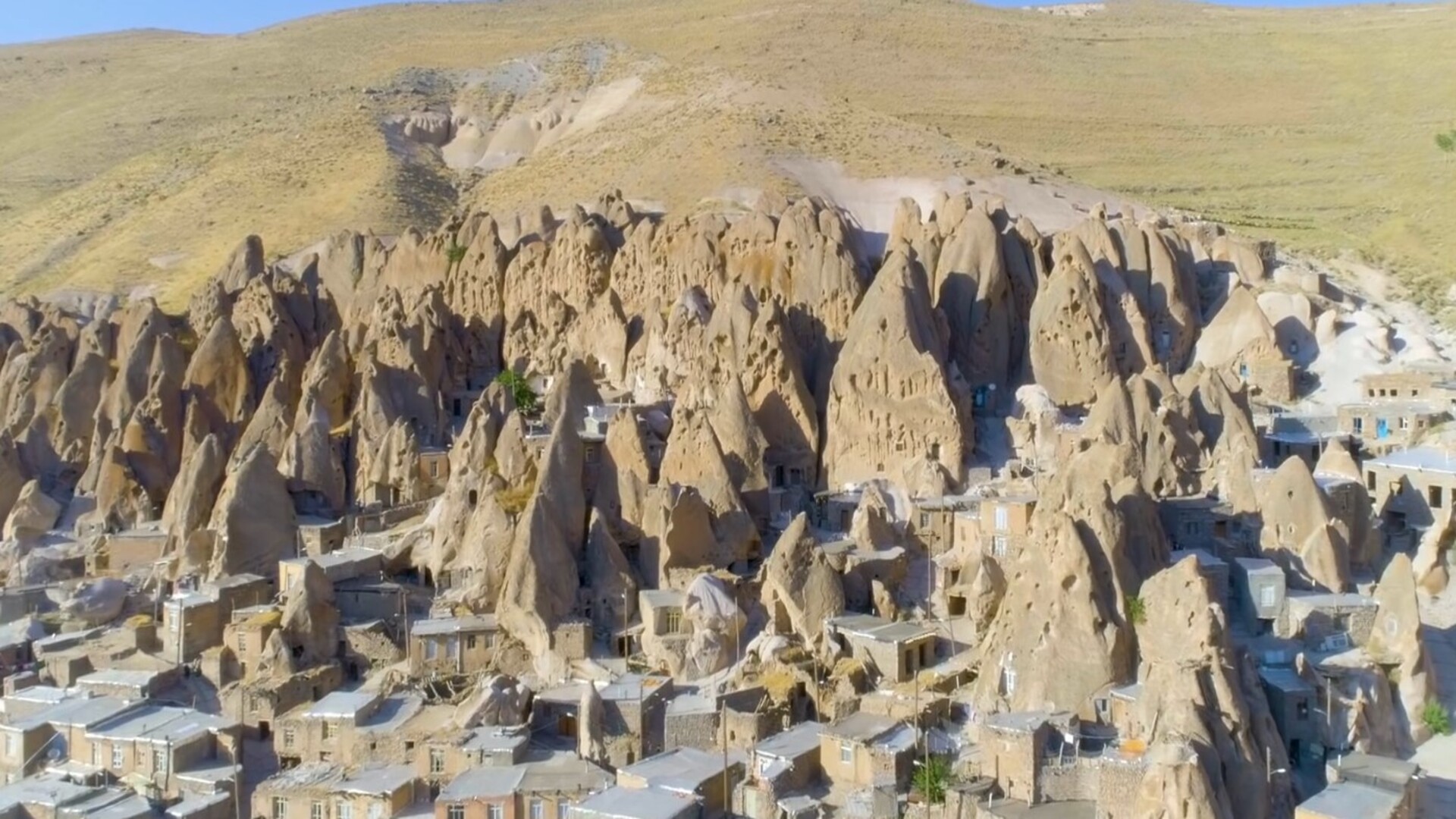Kandovan, the beehive village of Iran
Published On August 19, 2025 02:07 PM
Discover Kandovan, an ancient Iranian village carved into volcanic rock, where homes, schools, and mosques blend naturally with the mountain landscape.

In the rugged northwest of Iran, nestled against the slopes of the now dormant Mount Sahand, lies the remarkable village of Kandovan. From afar, it may seem like nothing more than a collection of oddly shaped peaks, but a closer look reveals a living settlement carved into hardened volcanic debris from an eruption thousands of years ago. The ash, lava, and rock solidified over time, and natural weathering shaped the formations into cone like structures. Over generations, villagers transformed these rocky spires into habitable caves, creating one of the most distinctive communities in the world. The name Kandovan comes from the Persian word kando, meaning beehive, an apt description for the clustered homes that appear to grow directly from the mountain. The natural insulation of the rock keeps interiors warm in winter and cool in summer, making heating and cooling unnecessary. This sustainable design, combined with breathtaking scenery, gives Kandovan a unique charm rarely found elsewhere.
Beyond its homes, Kandovan sustains a fully functioning village life with a mosque, a public bath, and a school, serving its approximately 600 residents. Life here flows at a slower, more traditional pace, shaped by the land and its history. Many villagers continue centuries old practices of craftsmanship and agriculture, maintaining a deep connection to their heritage. The architectural ingenuity of Kandovan has drawn comparisons to Turkey’s Cappadocia, yet it remains less commercialized, preserving its authenticity. Visitors who venture here often find themselves captivated by the harmony between human habitation and the natural landscape. The village stands as a testament to human adaptability, turning a once volatile volcanic past into a thriving and enduring community. Kandovan is not just a place to see, it is a living example of how history, geology, and culture can intertwine to create something truly extraordinary.